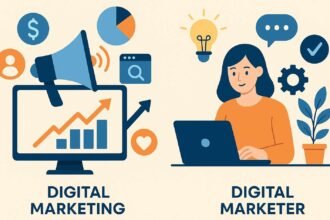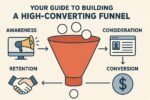Kickstarting Your Digital Launch Journey
A digital launch can be one of the most powerful ways to boost the growth of your business and make a big impact. When you know how to prepare for your big day, and have a plan the moment you say Tiok to the VIPs and customers, you can create something many digital creators dream of but never achieve — a truly record-breaking launch that sets new standards during your industry. What it takes is a clear definition of who you want to work with so you can meet their needs in a way that’s highly visible and engaging. When you design your launch with an eye to these considerations, you can optimize every facet of your plans, from pre-launch teasers and media buys to the day itself.
Though every niche and business is different, the same foundational principles apply to every successful digital launch. Begin by identifying your ideal customer and fully understanding their demographic makeup, level of income and education, primary problems they seek solutions for, and most popular digital hangouts. Next, establish achievable goals in a timeframe meaningful for your concept and niche, and develop a unique selling proposition (USP) that defines the content, upsells, and product hierarchy. Following a meticulous course of action allows you to build a detailed brand identity. Through ongoing engagement in your customers’ digital hangouts, you can start planting content and collaborations that amplify your presence. Employ a dedicated email marketing service provider (ESP) to craft sequences that cement your USP and brand, and let them carry the pre-launch template and progressive content series. By breaking the entire process down into a defined sequence, you can efficiently map each social media undertaking toward your ultimate, record-breaking outcome.
Identifying and Understanding Your Ideal Customer
Defining the ideal customer focuses on pinpointing the demographics of the target group, along with researching the behaviors and habits of a segment of the population that would be most interested in your product or service. This customer-centric approach to setting clear objectives ensures measurability and friendliness for customers and can be applied to both for-profit and nonprofit enterprises.
Choosing the right social media platforms involves identifying which pockets of social media your audience is congregating in and communicating on. Creating engaging content means developing relevant and engaging posts tailored for each social media channel that will capture potential customers’ attention. Leveraging influencer partnerships selects trusted figures within specific social media communities and tailors a collaboration that makes sense for both parties. Building a subscriber list compiles a list of email subscribers who have identified themselves as a customer base. Crafting effective campaigns involves developing targeted and scheduled email campaigns to keep these subscribers engaged, while also promoting products or services.
Setting Clear Objectives
Clearly defined objectives pave the path to a successful Digital Launch. Based on an understanding of the Ideal Customer, objectives flow naturally and enable measurable outcomes. Consider the following tactics to set precise goals.
Begin with a broad overview. Achieving a Record-Breaking Digital Launch requires knowing what to measure. Sales, revenue, or files downloaded are common distal objectives. Next, determine proximal objectives—such as the number of email addresses collected or event registrations. Such early metrics may indicate whether final transactions will reach desired targets. Ultimately, the objectives and content of any lesson, webinar, or funnel page are shaped by this broad outlook.
Distal objectives translate directly to a bottom line. Be specific about the targeted amount—and the timeframe. Would $10,000 in 20 days be remarkable? On the flipside, avoid setting the bar so high as to be discouraging. Objective setting remains an art.
Crafting a Compelling Value Proposition
The subsequent step involves articulating a compelling value proposition that resonates with the ideal customer and supports the defined success metrics. By synthesizing objectives, customer profiles, preferences, and behavior through the customer-centric approach, tangible and measurable objectives emerge. Understanding the target customer clarifies which platform they frequent for their content consumption, whether auditory, visual, or written.
A salient, brief statement offers a potential game-changing solution to an existing problem or unmet need of the ideal customer. When customers recognize this product or service, the solution often stands out from the competition. The value proposition hints at something that can transform customers’ lives, addresses a critical pain point, or fulfills an unmet need. Awareness and responsiveness to the ideal customer’s primary challenges, aspirations, or group needs are vital when finalizing the offer and framing the communication strategy. Visualizing the product as a pending sunrise for the target audience helps to realize an immediate benefit within the first 12–24 hours post-launch.
Building a Strong Brand Presence
A strong brand presence is built through attention to brand identity and consistency across online and offline channels. The process begins with the development of a logo and slogan, visual assets, and a well-articulated brand message. Beyond the identity, brand consistency maintains harmony between the brand and the target audience’s values and needs. Maintaining a consistent tone throughout the Read More: record breaking digital launch journey enhances this effect. A unified look, including the use of specific colors, patterns, fonts, logos, and mapped-out user experience journeys, adds authenticity. This authenticity connects different parts of the target customers’ lives with the brand, boosting recall and engagement. The brand supports the entire customer journey and generates positive word-of-mouth. Brand consistency can be applied not only in content but also in services or offers, such as preferred payment methods aligned with target market preferences or the choice of social media channels for support and interaction.
Social media marketing is a powerful tool for achieving record-breaking performance due to its global reach and cost efficiency. Chronicling the launch journey through up to 70% of the available content on the various social media platforms helps build a connection with potential customers. A visual guide can assist in achieving this. Supporting actions include collaborating with influencers and running paid advertisements on these platforms. Email marketing offers a direct and personalized approach to engage with the crowd, keeping them excited about the launch through drip campaigns that combine inspiring stories and regular updates. On launch day, a well-coordinated push, sometimes involving both paid and organic efforts, maximizes impact. Post-launch activities revolve around delivering delightfully unexpected experiences. A series of case studies provides detailed examples of these methods in action.
Utilizing Social Media Platforms
Maximizing reach and engagement on social media demands thoughtful platform selection, compelling content, and strategic partnerships. The three cardinal steps are:
Choosing the Right Platforms. When it comes to social media marketing, it’s better to do one or two social media platforms exceptionally well than to spread yourself too thin across multiple platforms. If your target audience is primarily professionals in the B2B space, for example, you’re better off concentrating the majority of your marketing efforts on LinkedIn. Creating Engaging Content. Having selected your primary platforms, the next step is finding ways to regularly provide helpful content for your audience. It doesn’t take much of a distracted mind to scroll through Facebook, Instagram, or Twitter and land on an ad that’s not only boring but also unrelated to the needs that you have. Leveraging Influencer Partnerships. Finally, once you have chosen your primary platforms and decided how you want to position your own brand, the final step is that of teaming up with one or several social media influencers who work with your target audience but aren’t in direct competition with the offer you plan to launch.
The reach and engagement provided by social media advertising can be further amplified by a complementary email marketing strategy that targets subscribers with personalized messages after the initial contact. Building a Subscriber List. When creating your subscriber list, consider who you want to target with your offer. Subscribers who have to opt-in to receive marketing communication are higher quality and more likely to convert than an unsolicited list of people. Crafting Effective Campaigns. Email marketing remains one of the most effective marketing tools—and it improves your brand’s credibility and professionalism. Take some time to write a series of email campaigns that will nurture relationships with your subscribers and guide them along the path to purchase, from awareness to interest, decision, and finally, action.
Choosing the Right Platforms
Social media works brilliantly for marketing new products and services. That’s why launching and marketing your new digital product or service is easier than ever before! But…choosing the right platforms can be tricky because every social media channel has its own strengths and weaknesses, and there’s no single “best” platform.
To scale up a digital launch successfully, find the platforms where your target audience lives and start creating great content there. Putting your staff and customers in the spotlight on these channels also works wonders because, after all, people do business with people they like and trust. Consider your audience’s habits: if your target customers spring for products at a later stage in the purchase funnel, then social media platforms that specialize in those categories are your go-to. For example, Facebook and Instagram are more focused on brand awareness and engagement but work well at launching later-stage products too.
Creating Engaging Content
Strategies for a Record-Breaking Digital Launch
The digital platform heralds a new era where anyone can share their knowledge, service, or products with a mass global audience. The desire to launch can often surface quickly, triggered by the appearance of the perceived perfect offer or program. Although digital platforms facilitate rapid launches compared to traditional modes of communication, developing a well-thought-out strategy before going live is crucial to avoid trivialising a carefully crafted message.
Choosing and using the right content mix is crucial in a social media strategy. Readers like to see different suggestions and styles of product or service showcasing presented by various presenters whom they relate to. As such, content creation should reflect approaches, styles of presentation, and stereotyping that mirror those of ideal clients, enabling solutions and products to resonate and stand out in the crowd.
Leveraging Influencer Partnerships
Strategies for a Record-Breaking Digital Launch
Kickstarting Your Digital Launch Journey: Introducing a strategic approach to digital launching and delineating the sequence of steps necessary to secure record-breaking results.
Identifying Your Ideal Customer: Defining target demographics and purchasing behaviors as the basis for Setting Clear Objectives. Crafting a Compelling Value Proposition that resonates with the audience is essential; it forms the foundation upon which a Strong Brand Presence is constructed. Selecting appropriate Social Media Platforms follows logically, with an emphasis on initiatives such as Choosing the Right Platforms, Creating Engaging Content, and .
Influencer collaborations provide unique opportunities for digital launch success. Brand-appropriate audience alignment is paramount, alongside clearly defined campaign objectives to guide selection. Formulating an Outreach Plan that specifies communication channels, messaging style, and timeline ensures efficient engagement. Influencers have myriad roles in launch campaigns; rewarding them with flat fees offers predictability, performance-based fees strategic incentive, and product seeding strengthens authentic bond. Infrastructure necessitates contract templates that outline deliverables and usage rights. Performance indicators may encompass website traffic surges, referral volumes, and sales conversions.
Successful pre-launch, launch-day, and post-launch activities hinge on meticulous partnership management. An exclusive preview event gratifies priority customers. Seeded products furnish authentic photographic assets. During launch week, dedicated social media posts and paid advertising amplify reach. Post-launch engagements leverage Feedback Gathering, Metrics Analysis, and Scaling by Audience Expansion. Developing viral content taps into milestone moments. Historical insights are illuminated through Case Studies of Successful Digital Launches.
Email Marketing Strategies
These days, when it comes to creating awareness of your launch, cold DM’ing or cold emailing a list that you didn’t create is just about the least effective way to do it. Potential customers were never interested in you to start with, and you’re just interrupting them. Yet, leveraging an email list can be one of the most powerful ways of creating talking points and awareness.
Our go-to is to create a highly targeted subscriber list of individuals that you know will be interested and highly engaged. This could simply be people who visit your site, or people who actually register an interest in your launch. You can gather these by running social media ads; offering a reward, whether that’s a free webinar or training; or a discount on the product launch itself. When these people receive your content and communications, they’re less likely to block or unsubscribe because they want to continue hearing from you.
Building a Subscriber List
The key to a successful digital launch is preparation. In particular, building a subscriber list will keep you closely connected to your audience and ahead of the competition. Subscriber lists enable the marketing team to reach out directly to potential customers via email campaigns and provide insights on market growth through audience surveys. The more developed your subscriber list, the easier it will be to test your audience’s reaction to your launch and obtain feedback during the important post-launch period.
There are three simple ways to encourage potential customers to subscribe to your list: newsletters, updates, and free content or giveaways. The newsletters can be weekly or monthly bulletins about general trends in your field. Updates provide subscribers with exclusive previews or early access to your services. Free content or giveaways might consist of an eBook, a calendar, or an online event. Once a subscriber list is established, it is useful to maintain consistent contact and deliver content that will appeal to subscribers in these and other formats. Email marketing can be extremely effective in turning subscribers into customers.
Crafting Effective Campaigns
An effective email marketing campaign is indispensable to achieve engagement and conversion rates that break records. Strategic elements include personalized subject lines and compelling content. Building and maintaining a motivated subscribers list creates a responsive point of contact for direct marketing campaigns. A focused approach to crafting engaging information ensures that readers respond with word-of-mouth publicity. These approaches apply across platform boundaries, so that the perfectly crafted tweet or blog post contains the right message at the right time to stir curiosity yet avoid the saturation point, with strategic timing emphasized using appropriate tools.
During the pre-launch phase, the underlying objective remains the same: to stir curiosity, deliver a sense of the product’s personality, and lay down the foundation for building relationships between the visitor and the host. Engaging in conversations and direct exchanges involving people both within the organization and in the target market help build connections and can inspire additional elements within the marketing campaign. When enough buzz is created, a smile of satisfaction accompanies the phrase, “The launch is expected to break records!”
Developing a Pre-Launch Campaign
The ultimate objective when launching a product, service, or organization into the market is to have a record-breaking launch—whether that means surpassing the previous year’s results, blowing away the competition, or forging an entirely new frontier. With a well-executed and strategic marketing plan, a record-breaking start is an achievable and realistic goal.
Setting clear objectives at the outset paves the way to a record-breaking launch. Such objectives might include beating the number of orders or sales of an older product launched at a similar time of year, exceeding sales targets, attracting an industry celebrity or influencer to review the product, or even generating greater interest on social media than the corporation achieved last year. An effective way to determine these objectives is to picture a specific individual—such as a professional bodybuilder, enthusiastic gym-goer, or all-round-sports lover—and then to reflect on the following: Which product in their category is likely to appeal to them most? What is lacking in the current offering? What price is affordable? Which benefits are most important to them and their needs or wants?
When these questions have been answered, it is possible to identify the unique selling points (USPs) of the product and refine the marketing approach accordingly. A USP might be “a product that needs to work first time all the time for serious gym enthusiasts,” “affordable for anyone,” or “rich in ingredients for supporting general fitness and health.” The final stage involves designing a pre-launch campaign—focusing on compelling teasers and sneak peeks—to build anticipation and excitement among the target audience.
Teasers and Sneak Peeks
Teasers and sneak peeks offer an effective way to captivate an audience and build buzz for a digital launch. By providing exclusive glimpses of what’s to come, digital marketers create anticipation and encourage early engagement. These techniques reveal elements such as new products or services, pricing details, launch dates, or feature highlights. The strategy addresses key questions that potential buyers might have and showcases why the product or service stands out from the competition. The approach varies according to the nature of the launch and existing audience relationships. Successful teasers influence consumer decisions without giving away the final proposition, ensuring the offer remains compelling and the outcome remains uncertain.
Opportunities abound for generating interest in an upcoming launch, particularly within social media channels where community discussion can amplify reach and deepen emotional connections. Complementary communication tools, such as email marketing, can provide personalized calls to action that prompt conversions at the critical moment. Various methods—from text announcements to detailed films, CTA buttons to hashtags—can pique consumer curiosity and transform it into purchasing action. Initiating this journey with well-crafted teasers and sneak peeks thus lays a strong foundation for a record-breaking digital launch.
Building Anticipation
Building anticipation is the sixth step in the sequential planning towards a record-breaking digital launch. For those first timers, launching digital products or services can be daunting indeed.
Pre-launch campaigns keep the target audience engaged and informed about upcoming offerings. Teasers and sneak peeks highlight key features and stimulate excitement, while strategic engagement activates a loyal community primed to promote through word-of-mouth. Such buzz tends to peak on launch day, paving the way for impressive first-day sales.
Creating a Launch Day Strategy
Launch day is the culmination of all the previous preparation. After careful planning of timing and scheduling, the execution of the launch will require a description of all the elements to be deployed during the launch, including all of the associated links, media, social media posts and emails. With the entire launch plan clearly mapped out, those responsible for executing the plan have all the necessary information required to ensure a smooth launch.
The previous work of stakeholder engagement and sharing the launch plan will pay dividends on launch day. President John F. Kennedy said, “Victory has a hundred fathers, but defeat is an orphan.” A digital launch either wins or fails. If a launch is successful, the broader university community must share the success. If the launch experiences any issues, those involved can then work together on the necessary modifications and adjustments. The sheer number of initiatives planned for both inside and outside the university environment requires a team approach in order to respond quickly to any issues that might arise during launch day.
Timing and Coordination
Timing is crucial for a successful digital launch. Identify the optimal date and time for launching from an ideal destination, taking into account factors such as time zone differences, customer habits, social media timings, and bank transaction clearances. For example, selecting a time between 11 AM and 2 PM relative to the target customer’s time zone can maximize exposure. A launch occurring later in the day might encounter difficulties with customer support for troubleshooting issues that arise shortly after the launch. Coordinate the launch across different digital channels, integrating social media activities with paid advertising, public relations efforts, email marketing campaigns, and other complementary tactics to optimize brand presence and capitalize on fact that other businesses are not yet targeting the launch audience.
Monitoring Performance Keep Track—and Shift Tactics Don’t stick blindly to a plan. Monitor advertising and social media daily for changes in demand or changes in the way a customer segment is responding to your communications and offers. Business cycles can move very quickly, sometimes even a change of the weather can subtly change demand characteristics. A good launch plan allows you to change tactics if required.
Monitoring Performance
: Closely tracking performance metrics during a digital launch enables assessment of progress toward achieving record-breaking results. Key performance indicators such as sales revenue, website traffic, social media engagement, and customer feedback provide valuable insights for making informed adjustments in real time.
Robust monitoring fosters an agile approach, facilitating data-driven decisions that capitalize on optimal launch conditions. Such strategic management is particularly important when navigating fluctuating market dynamics that can impact customer behaviors and preferences.
Post-Launch Activities
Gathering feedback after a digital launch begins with inviting selected customers to offer their perspectives and suggestions. This process not only reveals areas for improvement but also provides valuable material to use in promotional activities. An effective method is to create a published list of updates derived from user input, thereby demonstrating responsiveness and building confidence in the product.
Analyzing performance metrics follows as the next step, with attention paid to the individual marketing channels utilized during the launch. By targeting similar audiences and deploying analogous type of advertisements in these channels, the campaign can be scaled and repeated as often as budget parameters allow. Maintaining engagement with the subscriber list through regular Mailchimp communications serves as a long-term strategy for enhanced visibility and continued success. For a comprehensive post-launch planning process, readers may also refer to case studies of successful digital launches.
Gathering Feedback
The journey does not end once the launch is over, nor should the momentum. Gathering feedback in the days following the reveal provides several key benefits that keep a launch fresh and successful. Customer responses to the product or service—whether through emails, social media posts, or surveys—inform both the entrepreneur and potential buyers about strengths and weaknesses, future developments, and the legitimacy of offerings. Listening to the purchaser base also motivates ongoing production and adds to the feeling of connectedness supporting the endeavor.
Metrics tell another part of the story, offering a chance to analyse whether the launch met key objectives and a view forward to scaling its success over time. Case studies of successful digital launches highlight several next steps. Marketers can expand reach by advertising on paid channels, collaborating with complementary brands, and offering deals to new audiences. Simultaneously, they can solidify the customer base through options such as waitlists, memberships, subscriptions, or community groups.
Analyzing Metrics
Analyze the metrics with three questions in mind: what is the most important for your business—conversion, impressions, or brand awareness and growth? Another perspective is to look for areas where you are performing well and seek ways to expand this success. A third approach is to identify the least complex aspects to improve to increase your overall success. For instance, if your conversion rate is high, you might strive to reach a wider audience. When considering contact rates, evaluate how to enhance third-party conversations, prioritize the most valuable conversations, and address low-rate conversations in a better way.
During the campaign, maintain a process for capturing feedback and randomly select various feedback to address publicly; then capitalize on the positive engagement through social channels. This approach demonstrates with data what’s working, which is valuable for future campaigns. Share the learnings and metrics with your internal and external community; it will produce engagement as well.
Scaling Your Launch Success
Expanding Reach Scaling launch success hinges on reaching a larger share of the ideal customer base. During initial phases, social platforms and search engine optimization (SEO) tactics draw attention. Afterwards, ad buy techniques complement real-time SEO keyword tracking, maintaining visibility. Recently, brand collaboration has propelled multiple launches to six- and seven-figure revenues. These alliances allow partners to tap into each other’s audiences and benefit from communal organic reach. Optimal timing means collaborating with brands in the second or third preparation phase, when a company’s resources permit another cooperation.
Long-Term Engagement Building the launch on solid foundations transforms a single event into sustained company growth. Customer intelligence gathered throughout can improve product design and shape future offerings. Engaged readers encourage social sharing of the launch story, creating free publicity. They also maintain pre-launch communication, generating anticipation and ownership of the product’s genesis.
Expanding Reach
Once a digital launch achieves successful results within its primary market, reach can be expanded to engage a larger portion of the target niche via additional marketing campaigns. At this stage, the new audience should be similar to the original market but variant in ways that later tests can reveal.
In addition to repeating the original campaign with adjustments to reach distinct subgroups, the advertising budget can be increased to convert up to 100 percent of the existing audience. Advertising reach is one of the three core concepts of online business, so it is important to recognize when it is limiting growth and can be improved rather than limiting spending or plea. At this point, an ad campaign can be created for use after the launch is over to increase brand awareness and interest among the market customers who are familiar with it. Other methods of expanding reach include launching the same product on different platforms, collaborating with different companies, and targeting different customer bases.
Long-Term Engagement Strategies
Long-term engagement strategies can include creating an ambassador program that invites loyal customers to promote new launches, cultivating valuable relationships, and expanding brand reach. Another effective approach is utilizing branded hashtags related to the new launch to encourage customers to generate their own content.
Community-building initiatives such as hosting events, workshops, or webinars on topics aligned with the brand’s values and audience interests can foster a sense of connection. Developing a content creation calendar and releasing regular content that supports and promotes the new launch at subsequent milestones helps maintain attention and interest. Seasonal promotions or collaborations with other brands support momentum. Monitoring and responding to mentions, comments, and questions regarding the new launch ensure ongoing engagement and customer satisfaction.
Case Studies of Successful Digital Launches
Digital launches are milestones in a brand’s journey, often the most significant event of the year. An effective approach can maximize your audience and ensure measurable success. Strategies include setting clear objectives, identifying your ideal customer, developing a compelling value proposition, cultivating a strong brand presence through digital marketing, harnessing the power of influencer marketing, and building strategic partnerships.
A pre-launch campaign builds buzz and generates interest, leading consumers directly to your website. Launch day activities capitalize on this momentum, while post-launch actions analyze performance and review progress. Each phase offers opportunities for reflection and for applying lessons learned to future projects, aiming for the ultimate goal: a record-breaking digital launch.
Common Pitfalls to Avoid
Most marketing plans for a new digital launch kick off with the “Identify your optimal customer” step and continue straight through in the order listed. But not every plan reaches the finish line—and even fewer reach record-breaking results—because common mistakes at each stage often go unnoticed. Learning which hazards to look for and avoid improves anyone’s odds of success.
Because of the irrefutable connection between entrepreneur and target customer, establishing “who is ready and able to use the product” prior to defining goals is logical. But surveys detailing potential customer interest levels rarely inform or adjust preliminary goals. When high pricing excludes well-identified, ideal customer segments, failing to account for depleted demand early into the pre-launch stage weakens the entire marketing plan. The next logical step—setting measurable goals based on realistic returns from clearly defined, reachable markets—therefore comes after customer identification.
The Role of SEO in Digital Launches
Having executed a digital launch, the next step is to learn how to break records. Success becomes predictable when launches are executed with a record-breaking strategy. Identifying an ideal customer, setting clear launch goals, leveraging the brand, and utilizing pre-launch collateral all contribute to creating a follower community. These strategies culminate in a record-breaking launch. Optimizing the content around key digital marketing strategies for success—particularly SEO—also plays a critical role.
Simple, bite-sized marketing components come together for maximum impact. This approach starts with social media, followed by email marketing, culminating in a fully optimized website or funnel. Included are examples from successful digital launches. These components weave together to form the pre-launch phase, which builds anticipation before the grand unveiling. Focusing SEO efforts around the appropriate keywords is crucial for establishing a strong brand presence. Brand-building capitalizes on earned media through search engines, enabling engagement with even more followers. The guiding question becomes: What is the most efficient way to scale a launch and maintain high engagement levels?
Utilizing Paid Advertising
Choosing the Right Channels. Paid ads represent an undeniably powerful lever for your digital launch’s success. When used with proper strategy, they offer the advantage of precise targeting and broad distribution at high speed.
Yet not all ad channels are created equal. Different platforms carve out their own demographic niches, and some media types generate better responses for certain segments. Effective use of ad media, therefore, demands deliberate channel-admission decisions guided by clearly defined criteria.
Key criteria for paid-ad channel selection include: • Audience alignment: Selecting platforms frequented by your target demographics. • Ad format appropriateness: Choosing media types that effectively convey your message. • Cost-effectiveness and reliability: Ensuring a good return on investment and stable performance. • Cost-efficiency: Prioritizing channels with favorable cost-per-effect metrics.
Budgeting for Ads. A high-performing channel with large-but-expensive potential reach may attract initial attention. Yet, when it comes to budgeting, the most valuable traffic is delivered by niche ad media specializations whose audience segments closely align with your product niche. Carefully targeted ads typically yield better results, enabling smaller campaigns to achieve significant outcomes at reasonable costs.
Keeping these principles in mind enhances your ability to guide your launch toward record-breaking results.
Choosing the Right Channels
In the quest for a record-breaking launch, choosing the right channels is a crucial factor that can make or break your results, traffic, and sales. These days, there are so many options that it’s easy to go down the “shiny object” path and try and test every single one. But the most effective launch marketing campaigns focus all their efforts on just 2 or 3 channels that already have an engaged audience ready to buy.
Some common channels typically used in a pre-launch phase are social media, content marketing, SEO, paid ads, other brands or affiliates, email list, and influencer partnerships. Social media marketing can help you reach a larger population and engage with your audience, creating a buzz around your upcoming launch. The key is to understand where your ideal customers are scrolling — for visual, how-to, and leisure content, TikTok, Instagram, and YouTube are a great bet; for professional connections and B2B relationships, LinkedIn is the favorite; and for shared communities of problem-solving and information, Facebook, Facebook Groups, Discord, and Reddit provide access.
Budgeting for Ads
Choosing the Right Channels Successful digital launches require paid advertising on channels whose audience most closely aligns with the targeted audience. The renowned author and speaker Seth Godin recommends picking only one or two advertising platforms for new projects and becoming an expert in the chosen channels before expanding. Godin cautions against trying to cover all channels and doing a mediocre job on all of them. Effective promotion depends on identifying the platforms whose users are likely to want the product or service and advertising there.
Deciding how much money to spend on paid advertising for a digital launch is crucial. Historical data from previous launches provides invaluable guidance. A commonly cited rule of thumb suggests allocating 10 to 20 percent of the money expected to be made for advertising; for example, expecting US $10,000 in sales would warrant spending $1,000 to $2,000 on advertising. Ray Edwards advises budgeting approximately 20 percent of projected sales for ads. John Paul Mendocha recommends dedicating 10 to 15 percent of the anticipated gross sales for this category. Ultimately, while these heuristic guidelines offer a starting point for investment decisions, the justification for an effective launch budget remains the set strategy rather than rigid adherence to any fixed percentage.
Collaborating with Other Brands
Collaborating with other brands represents an effective strategy to reach a wider audience, develop brand loyalty, and realize long-term growth. The phased approach that facilitates a record-breaking launch—identifying customers, setting objectives, establishing branding, and generating interest—functions equally well in joint endeavors. The presence of a strong brand, known for delivering a unique value proposition, attracts potential partners wishing to associate with those qualities. This strategy likewise requires a clear set of objectives that includes determining the mutual benefits of the collaboration and the audiences to be targeted. The timeline coordinates launch dates, product development, and promotional activities, while the scope sets a plan for deliverables, budget allocation, and the division of responsibilities.
Cross-promoting and building anticipation generate greater interest in the combined offering. Inter-activeness and personalized engagement foster genuine connections between the brands and customers. Collaborations can take many forms, such as co-branded products, bundle deals, shared sponsorships, giveaways, and contests. Each approach benefits from the marketing savvy, creativity, and influence of the partners. During activation, seamless coordination of activities calls for real-time communication. Beyond the launch day, the partnership can celebrate milestones, gather feedback, analyze metrics, and seek new opportunities together.
Legal Considerations for Digital Launches
Determining the exact moment a product is officially launched often presents a challenge. While some may mark the start of the launch sequence, such as a pre-launch announcement, others may consider the moment the product becomes available for sale. Regardless, the primary objective remains a record-breaking product launch. However, the process varies significantly. Savage Global Marketing has identified the most crucial tactics designed to deliver exceptional digital launch outcomes.
Realising a record-breaking digital launch demands meticulous planning and a strategic approach. The initial step involves pinpointing the ideal customer—a cadre of truly incredible individuals who desire the product, require it, and are more than willing to pay for it. The focus must then shift to precisely articulating the desired digital launch results, framing a value proposition, and conducting a comprehensive customer profile. Next, crafting a compelling brand identity becomes essential, complemented by harnessing email and social media marketing platforms. Building anticipation through a well-structured pre-launch campaign sets the stage for an effective launch-day strategy. Post-launch activities entail gathering customer feedback, analysing campaign metrics, and leveraging social media to amplify success. Although this procedure may appear complex, thorough preparation renders it entirely achievable, ensuring a record-breaking digital debut.
Future Trends in Digital Launches
Technology and user behavior continuously evolve, compelling Marketers and Entrepreneurs to adapt their strategies. Keeping abreast of these shifts is essential for sustaining impact and engagement.
Automation and Artificial Intelligence enhance efficiency and personalization, allowing tailored communications that yield higher conversions. Through predictive analytics, offers and content can be fine-tuned for individual preferences. Chatbots effectively manage customer inquiries, delivering immediate support and fostering satisfaction. Concurrently, developments in the Metaverse open innovative avenues for immersive launches, extending reach and engagement by incorporating augmented and virtual reality elements.
Conclusion
Launching your business, product, or service can be an intimidating and overwhelming endeavor. When you make the decision to do so digitally, you have the opportunity to create a buzz online—through clever and creative planning—that can ultimately lead to a record-breaking digital launch. To do that, you first need to master the magic of crafting a launch, and then work diligently to propel it at an exponential rate via social media and email marketing.
Following the prescribed plan allows you to take your business, product, or service from concept to reality, optimizing your odds for a record-breaking digital launch. Williamson Financial Group LLC, an internationally recognized coaching and consulting firm, brings together the business acumen of Ron Williamson with Rachel Williamson’s talent for marketing—as well as the business drive of Tanya Williamson’s nonprofit expertise—in order to help you achieve astounding success.












